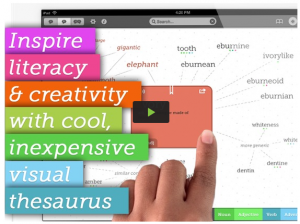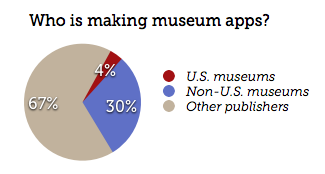Community Embraces New Word Game at Mid-Year Play Day This past Sunday, families at Takoma Park’s Seventh Annual Mid-Year Play Day had the opportunity to experience OtherWordly for the first time. Our educational language game drew curious children and parents to our table throughout the afternoon. Words in Space Several children gathered around our iPads […]
Read moreCategory: Strategy
Community Embraces New Word Game at Mid-Year Play Day This past Sunday, families at Takoma Park’s Seventh Annual Mid-Year Play Day had the opportunity to experience OtherWordly for the first time. Our educational language game drew curious children and parents to our table throughout the afternoon. Words in Space Several children gathered around our iPads
Play with the meanings of words, in space! Come by 7500 Maple Ave on Sunday afternoon, at the Takoma Park Community Center (next to the library) for the Seventh Annual Mid-Year Play Day. We’re excited to introduce OtherWordly to our local community! What to Expect As part of IDEA’s commitment to childhood literacy, OtherWordly helps
 Crowdsourcing can build virtual community, engage the public, and build large knowledge databases about science and culture. But what does it take, and how fast can you grow?
Crowdsourcing can build virtual community, engage the public, and build large knowledge databases about science and culture. But what does it take, and how fast can you grow?
 For some insight, we look at a crowdsourced history site: Historypin is an appealing database of historical photos, with dates, locations, captions, and other metadata. It’s called History “pin” because the photos are pinned on a map. (See recent article about Changes over time, in photos and maps.) Some locations have photos from multiple dates, showing how a place has changed over time, or cross-referenced with Google Maps StreetView. Currently, Historypin has 308k items, from 51k users, and 1.4k institutions. This is a graph of pins over the last three years: (more…)
For some insight, we look at a crowdsourced history site: Historypin is an appealing database of historical photos, with dates, locations, captions, and other metadata. It’s called History “pin” because the photos are pinned on a map. (See recent article about Changes over time, in photos and maps.) Some locations have photos from multiple dates, showing how a place has changed over time, or cross-referenced with Google Maps StreetView. Currently, Historypin has 308k items, from 51k users, and 1.4k institutions. This is a graph of pins over the last three years: (more…)
 Online education can have a real impact in the developing world. Last week, we needed to hire a programmer for a small freelance job. To my surprise, several candidates advertised they had completed programming MOOCs. These were young programmers in their 20’s, in countries like Pakistan and Thailand, who lacked college-level coursework, but are trying to launch freelancing careers based on online courses.
Online education can have a real impact in the developing world. Last week, we needed to hire a programmer for a small freelance job. To my surprise, several candidates advertised they had completed programming MOOCs. These were young programmers in their 20’s, in countries like Pakistan and Thailand, who lacked college-level coursework, but are trying to launch freelancing careers based on online courses.
Online courses and MOOCs may be a poor substitute for in-person learning with a charismatic teacher, but they are light-years better than nothing, and are particularly relevant for higher education and specific skills, when students are self-motivated. (more…)
 Online courses with very large enrollments have rapidly matured in the last two years, led largely by experiments outside mainstream academia by Coursera, Udacity and edX. Ambitious educators, technologists, and funders have created courses on diverse topics, and over five million students worldwide have registered for classes. And 3% have completed the courses. What can we learn? (more…)
Online courses with very large enrollments have rapidly matured in the last two years, led largely by experiments outside mainstream academia by Coursera, Udacity and edX. Ambitious educators, technologists, and funders have created courses on diverse topics, and over five million students worldwide have registered for classes. And 3% have completed the courses. What can we learn? (more…)
 Crowdsourcing means involving a lot of people in small pieces of a project. In educational and nonprofit outreach, crowdsourcing is a form of engagement, such as participating in an online course, collecting photos of butterflies for a citizen-science project, uploading old photos for a community history project, deciphering sentences from old scanned manuscripts, playing protein folding games to help scientists discover new ways to fight diseases, or participating in online discussions. (more…)
Crowdsourcing means involving a lot of people in small pieces of a project. In educational and nonprofit outreach, crowdsourcing is a form of engagement, such as participating in an online course, collecting photos of butterflies for a citizen-science project, uploading old photos for a community history project, deciphering sentences from old scanned manuscripts, playing protein folding games to help scientists discover new ways to fight diseases, or participating in online discussions. (more…)
 IDEA is in the planning stages of a new project, to create a new thesaurus app for the iPad. As an experiment, we investigated whether “crowd funding” is a viable way to fund new educational apps. Our Kickstarter project was not funded, but we are still making the app!
IDEA is in the planning stages of a new project, to create a new thesaurus app for the iPad. As an experiment, we investigated whether “crowd funding” is a viable way to fund new educational apps. Our Kickstarter project was not funded, but we are still making the app!
Here’s some information about our Kickstarter experiment. (more…)


 NASA redesigned
NASA redesigned  The vast majority of museums are totally ignoring mobile apps.
The vast majority of museums are totally ignoring mobile apps.